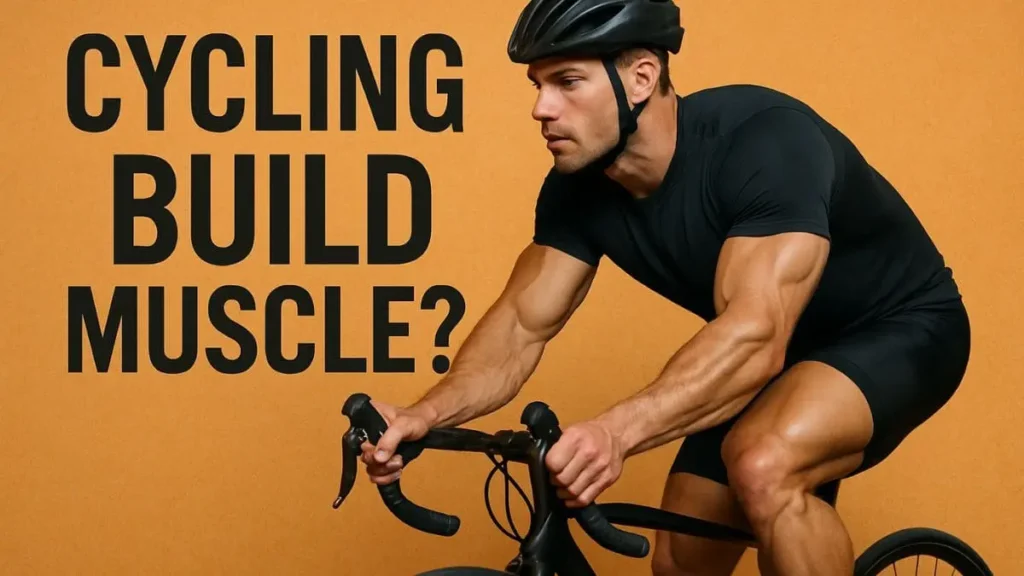Cycling is often praised for its cardiovascular benefits, it’s heart-healthy, low-impact, and great for burning calories. But many people wonder: Does cycling build muscle? The short answer is yes, but the longer answer involves understanding how muscle growth works and what kind of cycling you are doing.
Whether you are riding through the streets of London, pedaling across the countryside in Germany, commuting through Indian traffic, or racing down American mountain trails, cycling can contribute to muscle development—especially in your lower body. Let’s explore how cycling affects your muscles, what kind of gains to expect, and how to get the most out of your rides.
How Muscle Growth Works
To understand how cycling builds muscle, we need to look at the basics of muscle development:
- Muscle growth (hypertrophy) happens when you challenge your muscles through resistance or repeated exertion.
- Micro-tears form in the muscle fibers, which then repair and grow stronger.
- Resistance, intensity, and consistency are key drivers of this process.
What Muscles Does Cycling Work?
Cycling primarily targets the lower body, especially:
- Quadriceps (front of thighs)
- Hamstrings (back of thighs)
- Glutes (buttocks)
- Calves
- Hip flexors
These muscles work together every time you push the pedals. Over time, this repeated movement leads to increased endurance and, with the right training approach, increased muscle size and strength.
While cycling doesn’t typically develop upper body muscles, muscles like the core, shoulders, and arms do assist with balance, posture, and bike handling—especially on tough terrains or long rides.
Also read: How Do I Calculate Calories Burned Biking? Guide for Beginners
Does Cycling Build Muscle Mass?
Here’s where the nuance comes in.
Yes, But Not Like Weightlifting
Cycling is an endurance exercise, so it tends to promote lean muscle tone rather than bulky mass. You may not develop large, visible muscles like a bodybuilder, but you’ll definitely notice:
- Toned thighs and calves
- Increased leg strength
- Improved glute activation
- Better muscular endurance
Want More Muscle? Ride Differently
To shift cycling from an endurance activity to a muscle-building one, you need to increase:
- Resistance: Hill climbs, high gears, or cycling against wind.
- Intensity: Interval sprints or uphill sprints.
- Volume: Longer or more frequent rides.
Combining these factors with proper nutrition and rest will encourage greater muscle development.
Types of Cycling and Their Muscle-Building Potential
Different styles of cycling contribute differently to muscle development, depending on the terrain, intensity, and duration involved.
Road Cycling
Road cycling is one of the most common forms and offers moderate muscle gain potential. It focuses on building muscular endurance and toning the lower body—especially the thighs and calves—over long rides on relatively flat or rolling terrain. While you won’t build bulky muscles with road cycling alone, consistent riding helps improve strength and definition in the legs.
Mountain Biking
Mountain biking, on the other hand, provides a high level of muscle-building potential. Navigating rough terrain, steep climbs, and technical descents engages not just the lower body but also the arms, shoulders, and core. The added resistance from nature’s obstacles forces your muscles to work harder, promoting overall strength and power.
Indoor Cycling
Indoor cycling, such as spin classes or stationary bike workouts, is another excellent option for muscle growth. With controlled settings and adjustable resistance, these workouts can be tailored to simulate uphill climbs and sprints. This focused, high-intensity training helps build lean muscle, particularly in the glutes, hamstrings, and quads.
Commuter Cycling
Commuter cycling, while great for general fitness and eco-friendly travel, offers low to moderate muscle-building benefits. Since the rides are often shorter and less intense, the muscle development is more subtle. However, it still contributes to improved leg tone and cardiovascular health when done regularly.
Tips to Build More Muscle Through Cycling
- Add Resistance
Use higher gears or cycle uphill to add tension to the pedaling motion, forcing your muscles to work harder.
- Include Intervals
Alternate between high-intensity bursts (sprints or hill climbs) and recovery periods to challenge your muscles.
- Train Standing Up
Riding out of the saddle increases glute and core engagement.
- Cross-Train
Complement cycling with weight training—especially squats, lunges, and deadlifts—to build muscle mass faster.
- Fuel with Protein
Muscle repair and growth depend on protein. Include protein-rich meals or shakes after intense rides.
- Stay Consistent
Muscle building takes time and repetition. Try to ride at least 3 to 5 times each week.
Also read: Biking vs Treadmill – Which Burns More Calories? Simple Guide
What About Weight Loss and Muscle?
Many people take up cycling for fat loss—and that’s a great benefit. But as you lose fat, your muscle definition becomes more visible. So even if you’re not “bulking,” your legs and glutes will appear more toned.
Interestingly, cycling can preserve muscle mass during weight loss better than running or walking due to the constant resistance from pedaling.
What About the Upper Body?
Cycling doesn’t heavily target the upper body, but you can improve it with:
- Mountain biking or gravel riding, where arms control and upper body strength are essential.
- Cross-training with push-ups, planks, and weightlifting to balance your physique.
Final Thoughts: Yes, Cycling Builds Muscle!
Cycling is not just great for cardio—it is also a powerful way to build lower-body strength. While it won’t bulk you up like weightlifting, it tones, strengthens, and shapes your legs, especially when you add resistance, climb hills, or sprint.
Whether you are a casual city commuter, a weekend road cyclist, or a competitive athlete, your muscles are working harder than you think. Combine regular cycling with smart training and good nutrition, and you will build strong, sculpted legs that power every ride.
